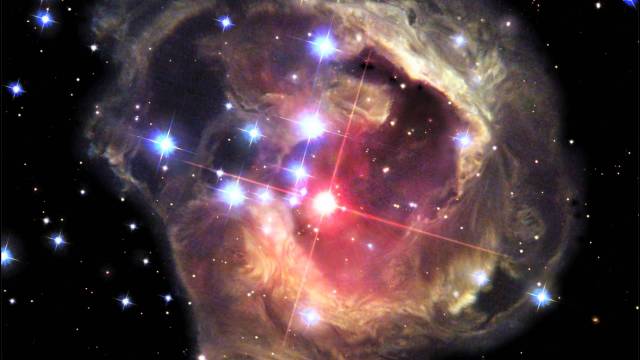Distant quasars show that fundamental constants never change
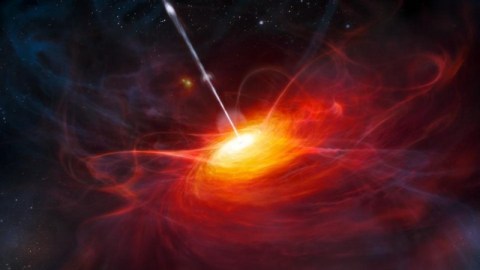
Want the speed of light, the fine-structure constant or others to change? There’s a new obstacle to overcome.
“The mystery about α is actually a double mystery. The first mystery — the origin of its numerical value α ≈ 1/137 has been recognized and discussed for decades. The second mystery — the range of its domain — is generally unrecognized.” –Malcolm H. MacGregor
From a physics perspective, it’s long been assumed that the fundamental constants and the laws of nature really are the same everywhere and at all times. However, one particular dimensionless constant, α, the ratio between the electric charge, the speed of light and the Planck constant, has been shown by a number of previous studies to show variations both the farther back in time we look and at different locations on the sky. However, new observations by a team working at Arecibo observatory, of the quasar PKS 1413+135, have placed a very tight constraint on the time variations, casting doubt on the previous findings. To only 1.3 parts in a million, the fundamental constant α once again appears to be truly constant.
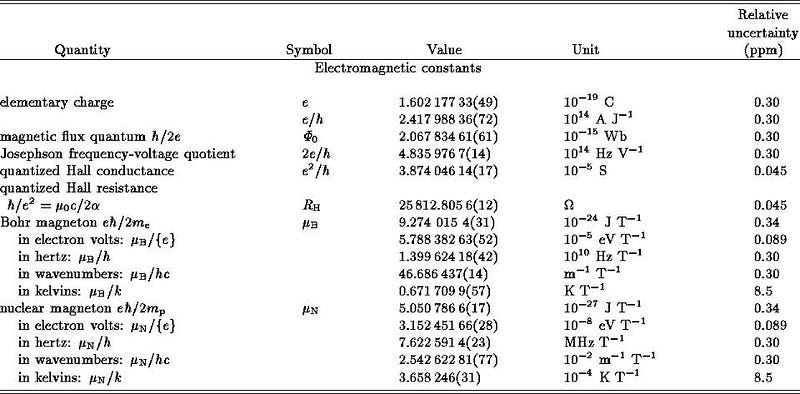
There are certain assumptions we make about the Universe that appear to be true based on what we see, what our theories state and what we can infer by putting them together. We see distant stars and galaxies that emit the same light and display the same spectral features as the ones near us, so we assume the laws governing atoms and nuclei are the same. We see the same hydrogen transitions, so we assume that the electric charges and masses of quantum particles are the same. We see the same large-scale clustering and rotations of galaxies, so we assume the gravitational laws are the same. And we see a consistent pattern in the energies, speeds and emissions from cosmic particles, pointing towards the speed of light being the same. Of all the fundamental constants, however, one has shown some circumstantial evidence for changing over time: α, the electromagnetic coupling constant.

α is known as the fine-structure constant, which defines the strength of the electromagnetic interaction. It’s completely defined in terms of some of the physical constants we’re more familiar with: it’s the ratio of the elementary charge (of, say, an electron) squared to Planck’s constant multiplied by the speed of light. When you put these constants together, you get a dimensionless number! At the energies currently present in our Universe, this number comes out to ≈ 1/137.036, although the strength of this interaction increases as the energy of the interacting particles rise. So when the Universe was very, very hot — like only 1 nanosecond after the Big Bang — α was more like 1/128. This effect is far too small to affect distant galaxies in theory, but one team arrived at a shocking result.
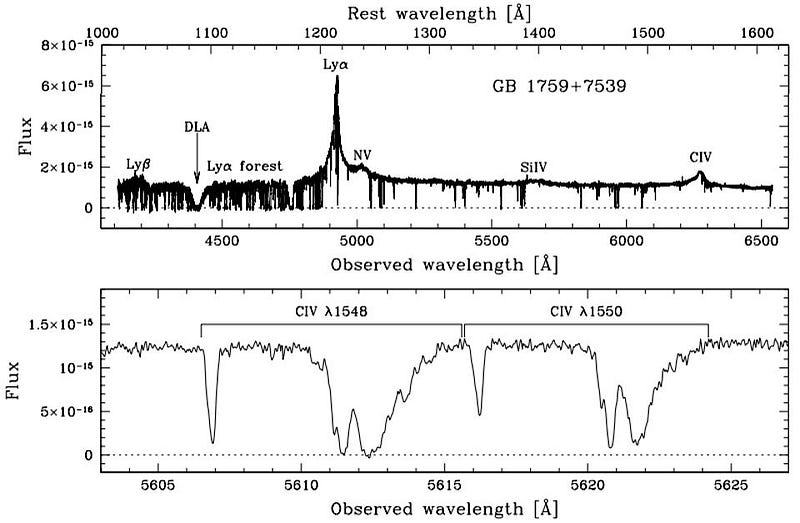
For nearly 20 years, a team led by Australian astrophysicist John Webb has been looking at atomic transitions in distant quasars, searching for variations in α. There are very intricate, precise energy levels that exist in both normal hydrogen and its heavy isotope (with an extra neutron), deuterium. When there’s an energy shift between these barely-separated levels, it’s known as either a fine or hyperfine transition, and it produces extremely precise photons, or quanta of light. If we measure the spectra of these different quasars and look for the precise hyperfine transitions, we ought to see these lines appear with the same properties, the same ratios and at the same wavelengths/frequencies everywhere, where the only difference is a stretching due to the cosmic expansion of space. But what they found instead was a bizarre effect: α appears to vary depending on where you are in the distant Universe!

When we look at quasars that are hundreds of millions to even billions of light years away, observations from Keck indicate that α was smaller in the past, at large redshifts. However, observations from the Very Large Telescope indicate that α was larger at very high redshifts, showing a possibly strange variation. Additionally, it appears that one direction in the sky has a value of α that appears slightly greater than average by a few parts in a million, while the opposite direction shows values that are slightly below average by the same amount. It’s an extremely small effect, as the variations are only about 0.0005%, but it appears to be real.

Wild speculations abound as to why, including that:
- perhaps the speed of light is changing?
- maybe the fundamental electric charge varies dependent on location?
- perhaps Planck’s constant — the constant governing quantum interactions — isn’t truly a constant?
- or perhaps different locations in the Universe don’t have the same fundamental properties after all?
It’s always possible that there’s a systematic effect here; that these few-parts-in-a-million variations are due to errors in the measurement technique and not due to new physics. But if that’s the case, the errors haven’t been identified.
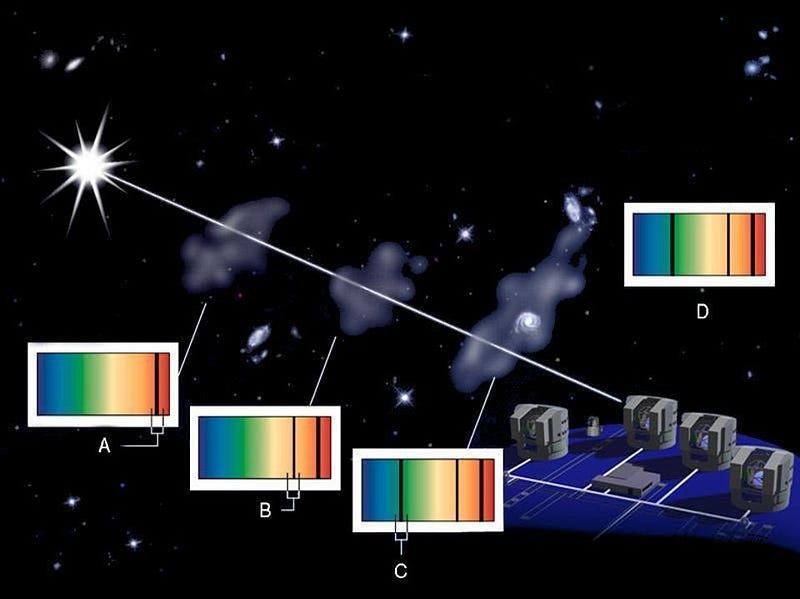
Thankfully, there is a very particular class of system — although rare — that can be used to check the constancy of α like never before. Three billion light years away, a bright quasar was found with a cloud of molecular hydroxyl gas (OH molecules) in front of it. The molecule has very particular fine and hyperfine transitions, leaving signatures at 1.612 GHz and 1.720 GHz, respectively, that can be observed with a large, sensitive enough radio telescope. The Arecibo observatory was up to the challenge, and after 150 hours of dedicated observation, they were able to get pristine measurements of these lines: 1.612 GHz thanks to its absorption of the background quasar light and 1.720 GHz due to its stimulated emission. The result? The best ever constraint on how the fine-structure constant, α, doesn’t vary with time: to no more than 1.3 parts in a million, or 0.00013%.

This observation places extremely strong constraints on whether the fine-structure constant varies with time or not: it doesn’t. However, it doesn’t rule out a spatial variation, since only one such remarkable system was observed. Of the three researchers involved on this project, Nissim Kanekar, Jayaram Chengalurand and Tapasi Ghosh, only the latter was available for comment. In a conversation with Ghosh, she elucidated that these hydroxyl clouds may be present around a great number of distant quasars, and that extraordinarily accurate radio observations may yet reveal these absorption or emission features elsewhere.
“We are hopeful that current searches for more quasar candidates showing the necessary OH lines will be successful. These could provide even tighter constraints on any possible variations of this atomic constant.”
If more of these systems are found, we may yet prove once and for all that the previously observed variations in α were due to measurement or systematic errors and uncertainties, and not due to any fundamental variations at all. While the expectation is that the fundamental constants will turn out to be truly constant, the only way to know for sure is to collect more data. After nearly 20 years of uncertainty, we are one step closer to demonstrating that the laws of nature really are the same everywhere.
This post first appeared at Forbes, and is brought to you ad-free by our Patreon supporters. Comment on our forum, & buy our first book: Beyond The Galaxy!





